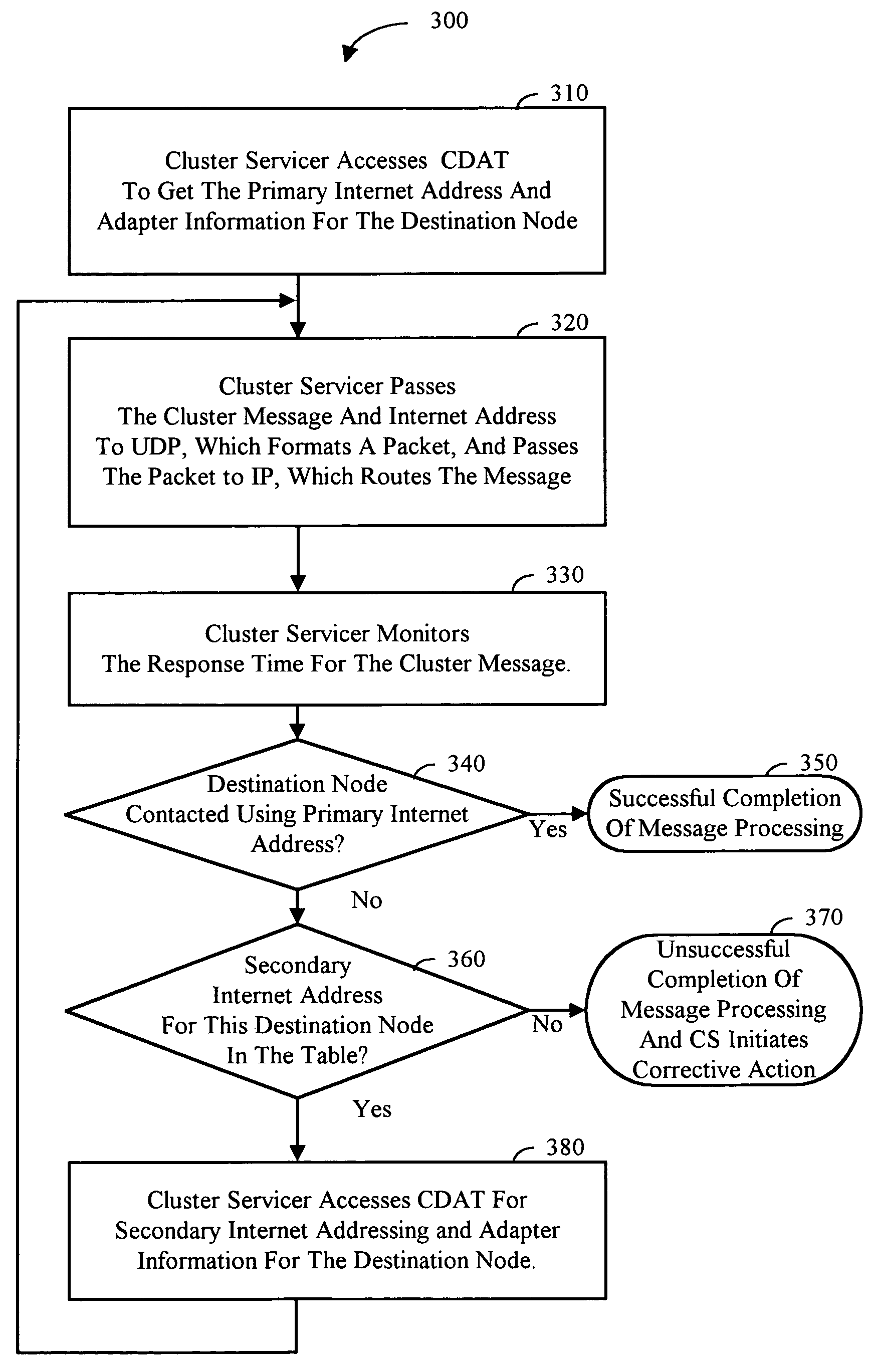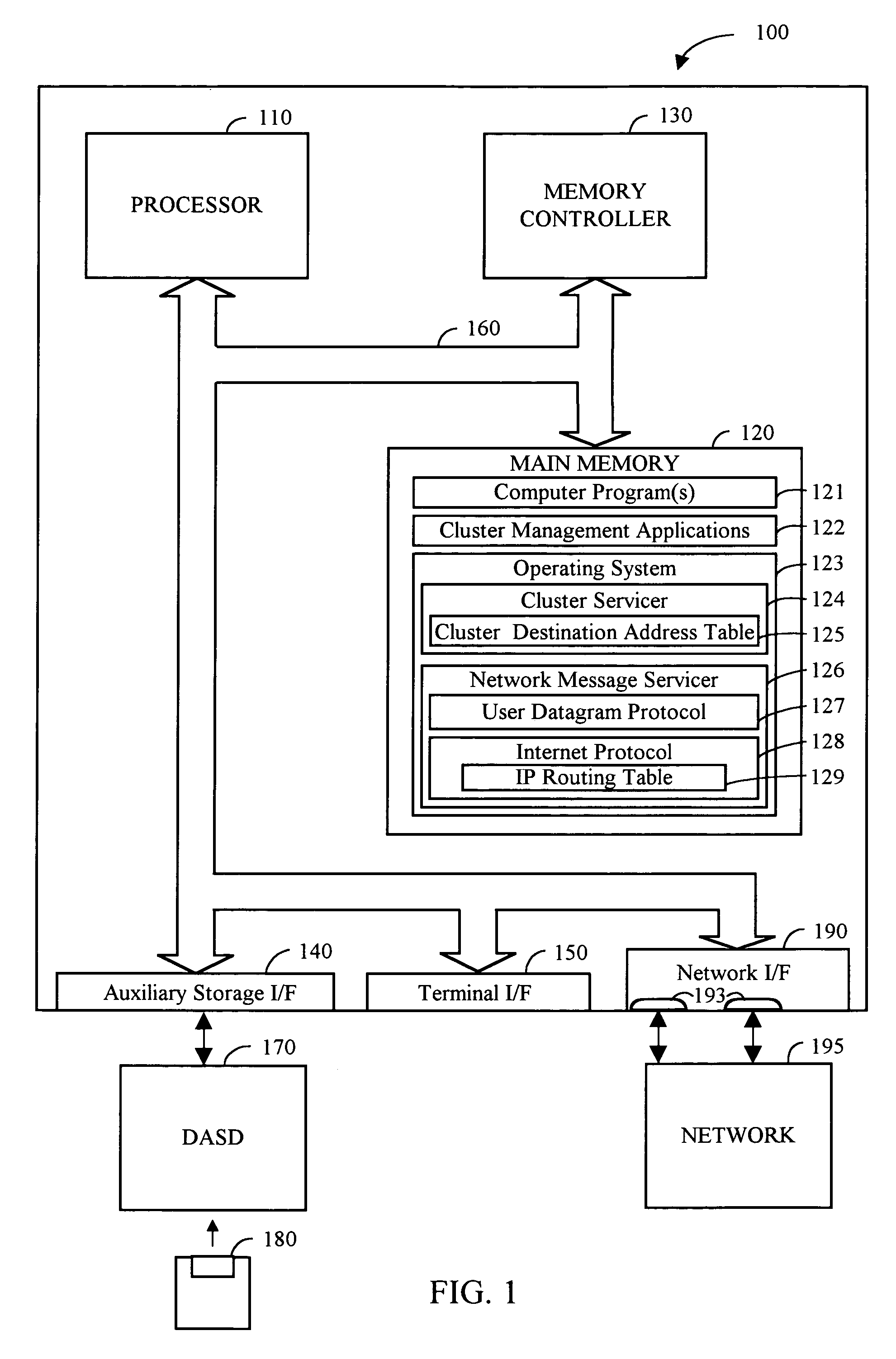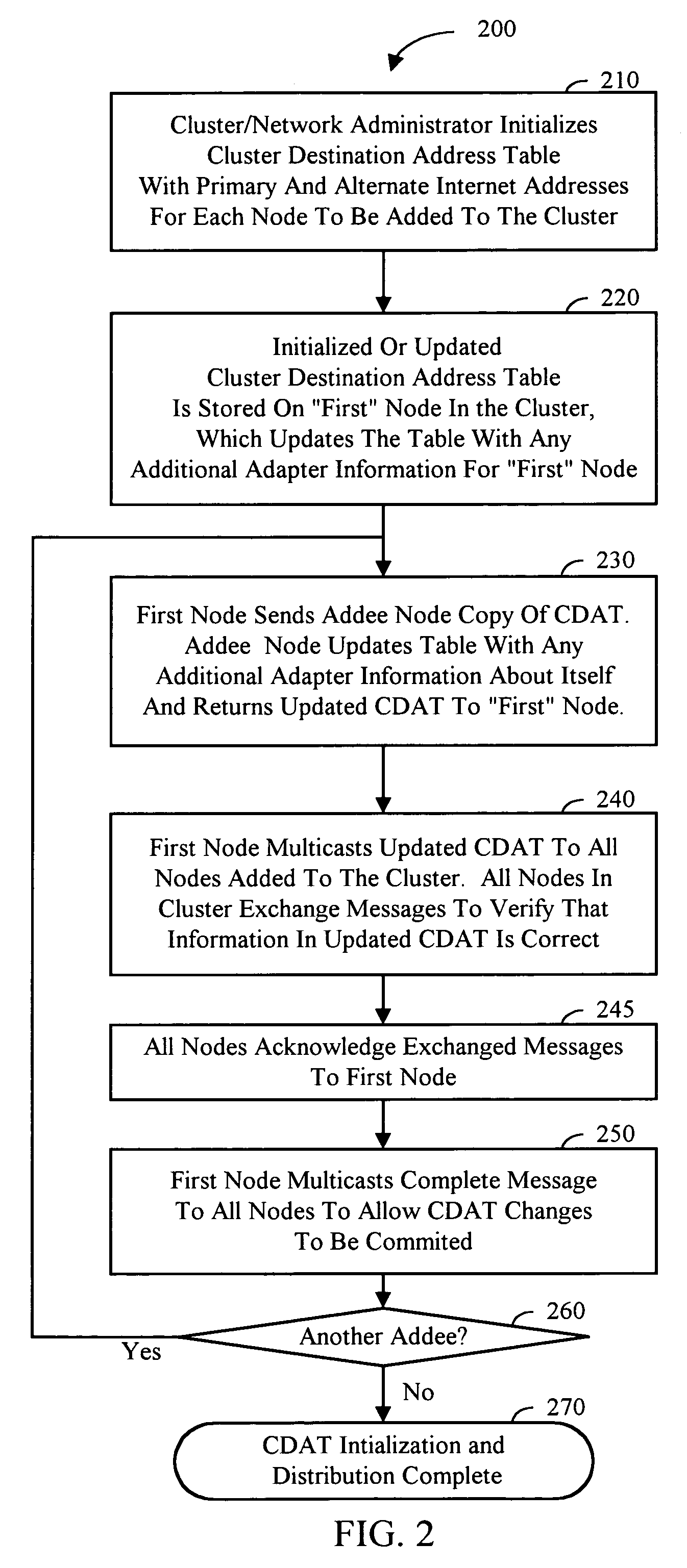Cluster destination address table-IP routing for clusters
a clustering and destination address technology, applied in the field of clustering computers, can solve the problems of clusters of computer systems that use these existing protocols correspondingly limited, cluster configuration is limited to one individual lan, and existing communications protocols for networks more complex than a single lan (such as wide area networks and internetworks), and achieve the low-latency, real-time, reliable messaging required to provide continuous availability.
- Summary
- Abstract
- Description
- Claims
- Application Information
AI Technical Summary
Benefits of technology
Problems solved by technology
Method used
Image
Examples
Embodiment Construction
[0023]The present invention relates to using the Internet protocol suite in conjunction with a cluster destination address table (CDAT) as the communications infrastructure to support cluster configurations beyond a single local area network (LAN). For those individuals who are not generally familiar with the concepts of clustering, User Datagram Protocol, and Internet Protocol routing over different types of network configurations, the Overview section below presents many of the basic concepts and terminology that will help to understand the invention. Individuals skilled in the art of clustering and Internet routing protocols may skip the Overview and proceed directly to the Detailed Description of this specification.
1. Overview
1a. Clustering
[0024]Clustering is the linking together of groups of computers in such a manner, that from the computer user's perspective, the cluster of computer systems appears as one computer system. Clustering is transparent to the users of computer clu...
PUM
 Login to View More
Login to View More Abstract
Description
Claims
Application Information
 Login to View More
Login to View More - R&D
- Intellectual Property
- Life Sciences
- Materials
- Tech Scout
- Unparalleled Data Quality
- Higher Quality Content
- 60% Fewer Hallucinations
Browse by: Latest US Patents, China's latest patents, Technical Efficacy Thesaurus, Application Domain, Technology Topic, Popular Technical Reports.
© 2025 PatSnap. All rights reserved.Legal|Privacy policy|Modern Slavery Act Transparency Statement|Sitemap|About US| Contact US: help@patsnap.com



